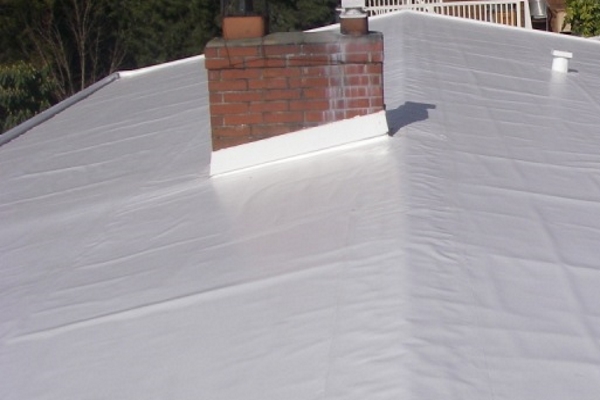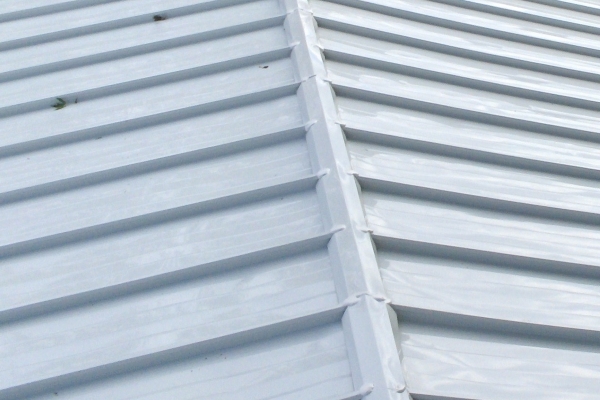You can get overwhelmed just thinking about how to roof a house. However, if you’re willing to put time and resources into it, you can perform a simple roof installation. Anyone who has all the necessary materials and equipment and places keen attention to detail is qualified to perform any roof installation or repair.
Types of Roofing Materials
Before you start, it is vital to know about the different roofing materials available for the roof of your home. Each type of roof offers an advantage in durability, costs, and overall lifespan. Learn more about them to see which roof perfectly fits your budget and will work effectively for your home.
Felt
Roofing felt is a single ply membrane capable of providing protection against ice, snow, and rain. It is easy to install with roofing nails and staples and works effectively with any roofing shingle or shake types. Roofing felt is also affordable at $0.39 per square feet and has a lifespan of over 20 years.
Tar and Gravel
How to roof a house in the early centuries: use tar and gravel to cake together flattened stone. In the modern world, these two materials cake together waterproofing and corrosion-resistant material. They’re heavy but durable. Tar and gravel roofs cost about $4 per square meter and a lifespan of over 40 years.
EPDM
Ethylene Propylene Diene Monomer (EPDM) roofs are affordable and thick membranes that come highly recommended from most contractors. It costs only $0.80 per square feet and can block UV rays and introduce excellent insulation. EPDM roofs also have a lifespan of over 30 years.
TPO
Thermoplastic polyolefin is a hybrid and strengthened EPDM membrane. It introduces a watertight seal around your roof and is thick enough to resist rain, ice, and snow. It is also fire-retardant, but a bit costly at $5-$6 and has an average 20 year lifespan.
PVC
Polyvinyl chloride is a material used in many applications, including roofing. PVC are strong roofing materials that commercial and industrial properties use because of their durability and long lifespan of 30 years. However, they are quite expensive costing about $6-$10 per square feet.
Metal
How to roof a house the easiest possible way with one of the strongest roofing materials? Use metal. Steel or aluminum roofing can last from 30-50 years. Minor metal roof repairs are quick and easy to perform. However, it can be expensive because a square feet of metal roof can cost about $15-$60.
Asphalt
Asphalt, used in building bridges and structural decks, costs less than metal but has a longer lifespan of 50 years. However, its durability comes with a price because it is heavy and requires special support joists. A square feet of asphalt costs about $2.50-$4.00. Aside from asphalt shingles and slope seams, take a look at other shingles made from attractive and sturdy materials.
Tools You’ll Need
Any professional who knows how to roof a house has the following equipment to ensure their safety and an excellent roofing installation. Make sure you have all of these before starting.
- Roofing Hatchet
- Roofing Shovel
- Pry Bars
- Framing Square
- Chalk Line
- Tin Snips
- Hammer Tacker
- Power Nailer
- Saws
- Roof Adhesive
Seven Effective Steps on How to Roof A House
1. Identify Local Building Codes and Obtain Permits
Make sure to check with your residential local building codes regarding roofs. Certain cities require only particular materials or a specific number of shingles. This is to ensure aesthetic continuity in the community and to prevent any untoward incident uprooted roofing materials cause during any possible violent weather conditions. Before starting, obtain any building permits to avoid any costly local civil code penalties.
2. Find The Roofing Material You Need
Take note of the roofing materials earlier and identify which one works for your budget and for your property. Each material has varying difficulty in terms of installation. Gauge your roofing installation skill before making a choice. Metal roofs, roofing felt, and shingle-style roofs are easy for beginners to install.
3. Remove Old Roof (for Pre-Constructed Roofs)
Skip this step if you’re constructing a new property and are about to construct your roof. Using the pry bars, remove the staples, fasteners, or nails on your old roof. Place the removed waste into your roofing shovel. Old roofs with screws and fasteners that have rusted or hardened require you to hammer down a pry bar to loosen the material. Take frequent breaks from this demanding task to place the waste on the shovel to the trash bin.
4. Install Drip Molding and Flash Roof Valleys
Drip molding leads rainwater straight to the gutters of your roof. Take your roofing nails and your chalk line. Align the drip molds and space each installation nail by 12 inches. Mark these spaces with chalk and begin nailing. Nail down your roof valley flashing in the same manner.
5. Use Chalk to Mark Nail Spacing
For roofing felt, synthetic roofs such as EPDM, TPO, and PVC, and metal roofs, you will need nails to fasten them to your roofs. In the same manner you did with the drip mold, mark the areas you need to nail with chalk lines. Space them by 6 inches.
Spread the seams of your roofing material across the roof’s surface. Allow them to overlap by half an inch to create a watertight barrier and introduce insulation.
6. Apply Roof Adhesive on Exposed Nails
Roofing adhesive creates a watertight seal around exposed nails. It also helps them against violent weather conditions that may loosen or uproot them. Apply them using the included application instrument evenly on areas with exposed nails.
7. Let Dry and Enjoy Your New Roof
Let the roofing adhesive dry before performing a thorough post-inspection of your roof. During this process, check for any loose nails, excess roofing seams, areas with cracked adhesive (which need reapplication of the substance), and other areas to redress. Repeat the process until you have resolved all possible issues of your roofing installation.
Conclusion
It is overwhelming when thinking of how to roof a house. If you follow these steps precisely, you will install a roof that maximizes its capabilities and lifespan without any trouble at all. However, some roofing situations may require an experienced eye. If you require a quick and efficient roofing installation service, you may want to consider hiring professional roofing contractors to speed up the process.




















